The Ultimate Guide to NetSuite Integration
Learn how you can integrate your NetSuite data to supercharge your ERP capabilities.
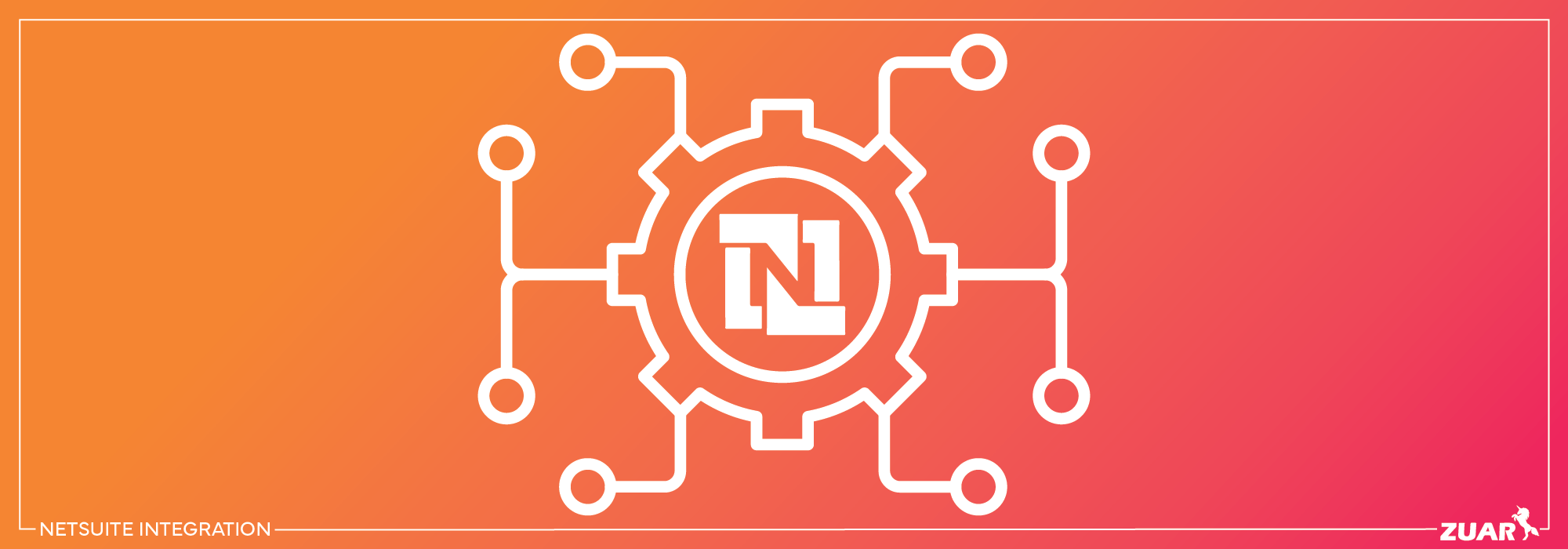
Overview
Are you tired of manually transferring data between your siloed business systems, leading to costly errors and inefficiencies? Look no further! NetSuite, a leading cloud-based ERP system, offers a wide range of integration options to ensure seamless data flow between your business systems.
In this article, we will delve into the world of NetSuite integration, explore the advantages it brings, address the challenges faced, and present various approaches to achieve the desired connectivity.
Get ready to embark on a journey through the intricacies of NetSuite integration, as we take an in-depth look at its capabilities in integrating with e-commerce, point-of-sale, and logistics systems, as we explore this powerful platform.

Understanding NetSuite Integrations
NetSuite integration is the process of connecting your NetSuite ERP system with other systems, databases, and endpoints, enabling seamless data exchange between various business systems. With the right integration strategy, you can:
- Extend NetSuite’s capabilities
- Streamline operations
- Enhance visibility across your entire tech stack
- Achieve more efficient and cost-effective business processes.
Integration options include custom integration, pre-built connectors, and more, each with its own set of benefits and challenges. Before exploring these options in-depth, we should first examine the different types of NetSuite integrations and the accompanying tools.
Types of NetSuite Integrations
NetSuite integrations can be categorized into two types: one-way and two-way data synchronization.
One-way integrations transfer data in a single direction, while two-way integrations enable data flow in both directions, ensuring that both systems are always up-to-date.
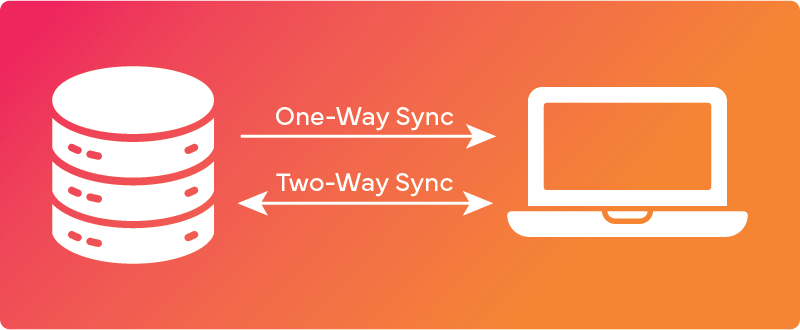
Each integration type serves different purposes, depending on the desired direction of data flow and the complexity of your business requirements.
There are a wide variety of platforms and applications that NetSuite can integrate with. Some examples of NetSuite integrations include:
- CRM Integrations: Integrating NetSuite with Customer Relationship Management (CRM) systems to ensure synchronization of customer data, sales information, and other critical business operations.
- E-commerce Integrations: Linking NetSuite with e-commerce platforms like Shopify, Magento, or WooCommerce to manage inventory, sales, and customer data efficiently.
- ERP Integrations: Integrating NetSuite with other ERP systems, often necessary for companies transitioning to NetSuite or operating in a hybrid IT environment.
- Supply Chain and Inventory Management Integrations: These integrations streamline supply chain processes and inventory management, syncing data across distribution, warehousing, and logistics.
- Business Intelligence (BI) and Analytics Integrations: Connecting NetSuite with BI tools for enhanced data analysis, reporting, and decision-making capabilities.
NetSuite Integration Methods
To facilitate seamless integration between NetSuite and third-party systems, several methods and tools are available.
SuiteTalk Web Services and RESTlets:
SuiteTalk is a set of SOAP-based web services provided by NetSuite that allows external applications to communicate with NetSuite data. It's widely used for integrations due to its robustness and flexibility.
RESTlets are custom scripts written in JavaScript that can be used to extend the capabilities of SuiteTalk. They offer more flexibility in terms of custom logic and processing of data, suitable for complex integration needs.
CSV Imports:
This method involves importing and exporting data in CSV (Comma Separated Values) format. It's a straightforward approach for bulk data transfer, such as updating inventory levels, price changes, or batch customer updates.
SuiteScript:
SuiteScript 2.0 is a NetSuite platform built on JavaScript that allows for the creation of custom business logic within NetSuite. It can be used to develop custom integrations, automate processes, and handle unique business requirements.
ODBC, JDBC, and OData:
NetSuite also supports direct database access through ODBC (Open Database Connectivity), JDBC (Java Database Connectivity), and OData (Open Data Protocol). This method is typically used for complex NetSuite reporting and data analysis needs.
Third-Party Integration Tools:
For a more automated and robust solution, you can utilize a third-party data integration platform, such as Zuar Runner, which can integrate NetSuite with a variety of other applications and databases.
Given that these tools often provide a more user-friendly interface and can handle complex integrations without extensive coding, this is often the preferred approach. Learn more about Zuar Runner:
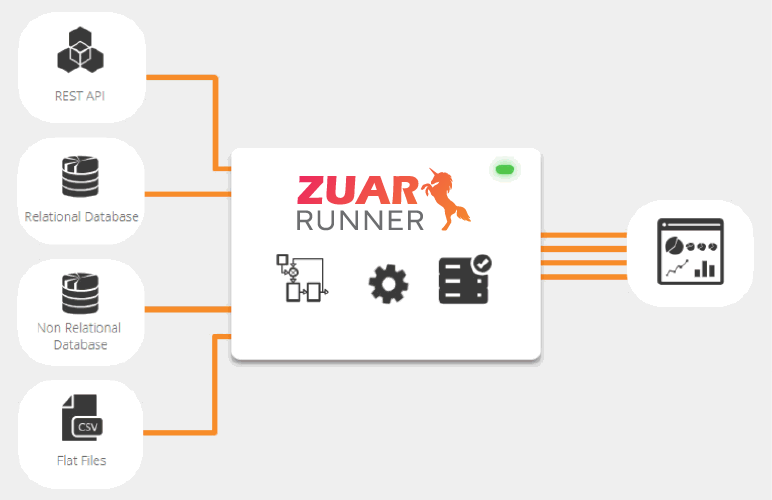
Watch this video to learn more about the NetSuite API:

Advantages of NetSuite Integrations
NetSuite integrations offer numerous advantages that can significantly improve your business processes, including inventory management, order management, and accounting.
Inventory Management
By integrating NetSuite with your inventory management system, you can:
- Gain real-time visibility into inventory levels, enabling more accurate forecasting and planning
- Automate item tracking, reducing manual labor and potential mistakes
- Ensure that stock levels are always up-to-date and accurate
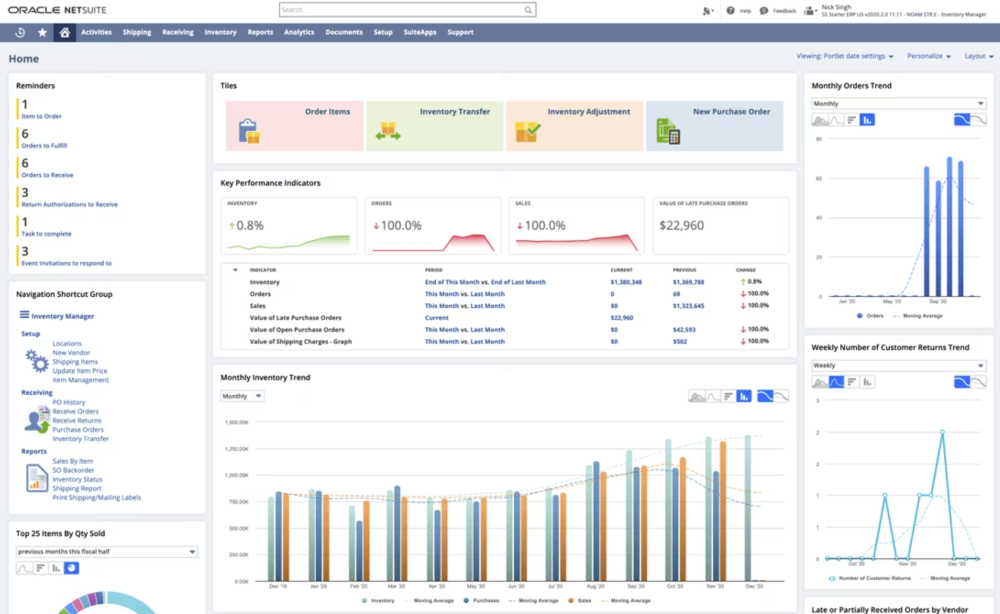
NetSuite integrations can also help you manage stock levels by providing automated notifications when stock reaches a predefined threshold. This enables more efficient inventory management and helps prevent stock-outs.
With precise cycle counts facilitated by automated processes, you can ensure accuracy while reducing the time and effort required for manual inventory counting.
Order Management
Order management is a critical aspect of any business, encompassing order entry, processing, fulfillment, and tracking.
NetSuite integrations can significantly streamline this process, making it more efficient and rapid. By automating order management, you can eliminate manual data entry, reduce potential errors, and speed up order processing and fulfillment.
Integrations such as e-commerce and marketplace, point-of-sale, and logistics can further enhance your order management process, providing a consolidated view of customer orders, real-time order status visibility, and automated order processing.
With the right integration strategy, your business can achieve a seamless order management process that leads to improved customer service and inventory management.
Accounting
Integrating NetSuite with your accounting system can greatly enhance your accounting processes.
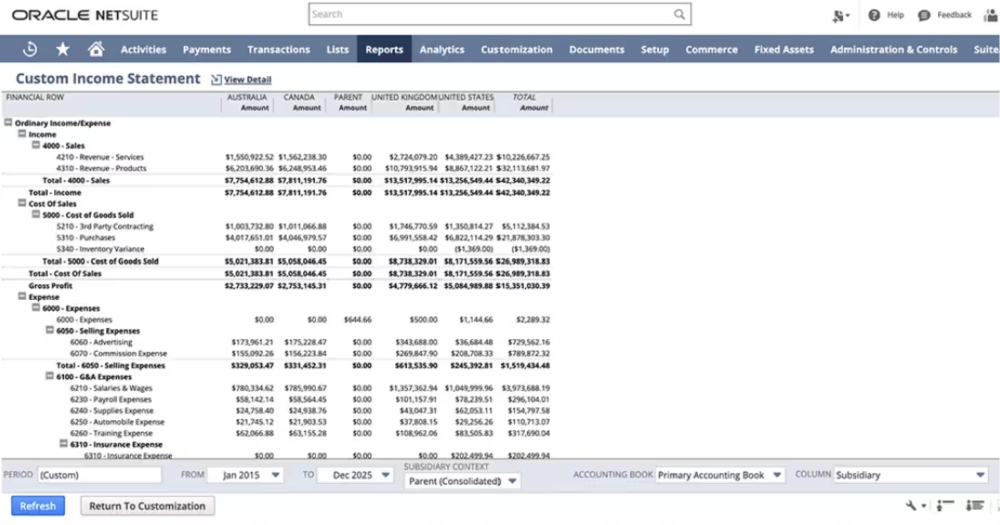
Real-time visibility into financial data allows for more accurate reporting and greater control of financial assets. Automation of financial processes, such as recording transactions and managing payables, not only saves time but also minimizes costly errors that can arise from manual data entry.
Utilizing NetSuite integrations streamlines your financial operations, enhancing accuracy, compliance, and overall efficiency. This shift allows your business to direct its attention towards growth and innovation, instead of grappling with tedious accounting tasks.
For a more in-depth conversation on harnessing NetSuite data, check out this webinar:


Challenges in NetSuite Integrations
While NetSuite integrations offer numerous advantages, they are not without challenges. Implementing a successful integration requires addressing issues such as concurrency governance, data transfer rates, and API complexity.
Understanding these challenges is crucial to ensure a smooth integration experience and avoid potential pitfalls that can hinder data flow and system performance.
Concurrency Governance
Concurrency governance involves managing multiple users accessing the same data simultaneously, which can be a challenge when working with NetSuite integrations.
Ensuring that data integrity is not compromised or lost due to concurrent access is crucial for maintaining accurate records and efficient operations.
To address concurrency governance challenges, you can increase the number of concurrent requests, implement a queue system to manage requests, or monitor the concurrency limit to ensure it is not exceeded.
By effectively managing concurrent access, you can prevent data corruption and ensure a smooth integration experience.
Data Transfer Rates
Data transfer rates refer to the speed at which data is transferred between systems. Slow data transfer rates can lead to extended transfer times for files between databases or systems, potentially impeding the decision-making process and overall productivity.
To mitigate the impact of slow data transfer rates, consider optimizing your integration processes, compressing data for transfer, or utilizing a more efficient method of data transfer.
By addressing data transfer rate challenges, you can ensure timely and accurate data exchange between your NetSuite system and other integrated systems.
API Complexity
NetSuite’s API is intricate, necessitating an in-depth understanding of the platform and its features. Working with the API can be challenging, requiring patience and technical expertise to troubleshoot and debug issues that may arise.
To navigate the complexities of NetSuite’s API, follow these steps:
- Familiarize yourself with the platform, its features, and the various API calls.
- Utilize available documentation and support resources to understand how to use the API effectively.
- Verify API calls prior to implementation in production to ensure they work as expected.
By following these steps, you can effectively work with NetSuite’s API.

Approaches to NetSuite Integration
Having discussed the advantages and challenges of NetSuite integrations, it’s time to review the various approaches to achieving successful integration. We'll look at two approaches to NetSuite integration: custom integration and pre-built connectors.
Each approach has its own set of benefits and challenges, and the choice depends on factors such as your technical proficiency, IT budget, and the systems you wish to connect with NetSuite.
Custom Integration
Custom integration involves creating a bespoke integration tailored to your specific business requirements. This approach offers numerous advantages, such as flexibility, scalability, and increased efficiency.
However, it requires an extensive understanding of the NetSuite platform, as well as familiarity with web services, APIs, and other integration technologies.
When contemplating custom integration, you must account for the development and maintenance costs.
Pre-Built Connectors
Pre-built connectors are an alternative solution for NetSuite integration. These connectors are simple to configure and maintain, offering a reliable connection between NetSuite and other applications.
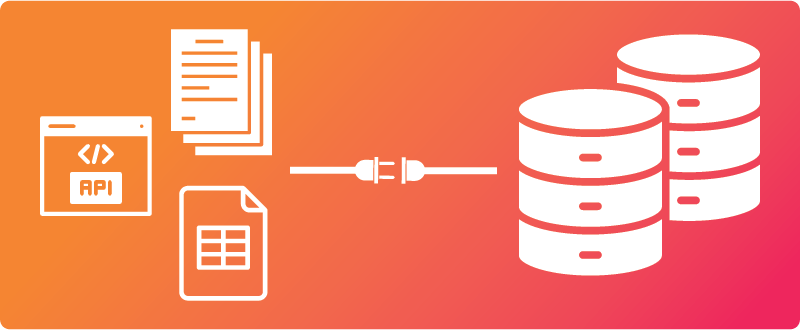
This approach is typically preferred over building custom integrations because they significantly reduce the time and resources required for development, and they come with built-in best practices for security and performance.
Additionally, they are typically maintained and updated by the provider, ensuring compatibility with the latest versions of the connected systems and reducing the long-term maintenance burden.
Zuar Runner is an end-to-end data integration platform that comes with a wide variety of pre-built connectors, including a connector for NetStuite. Click here to see a full list of Zuar Runner's prebuilt connectors.

NetSuite Connector: An In-Depth Look
The NetSuite Connector is a powerful tool for connecting NetSuite with various business systems, including e-commerce, point-of-sale, and logistics providers.
By leveraging the capabilities of the NetSuite Connector, businesses can automate their processes and improve overall efficiency for NetSuite users.
E-commerce and Marketplace Integration
The NetSuite Connector can automate online product listings, order processing, and shipment tracking for e-commerce and marketplace platforms.
By integrating NetSuite with these platforms, businesses can enhance data accuracy, provide real-time reporting and analytics, save on administrative costs, streamline communication with customers, and integrate with popular e-commerce platforms
With the help of NetSuite data, businesses can make informed decisions and improve their overall performance.
Point of Sale Integration
Connecting NetSuite with point-of-sale (POS) systems can provide numerous benefits, such as:
- Synchronized product, pricing, and inventory data
- Improved order management efficiency
- Enhanced customer service
- More accurate inventory management
This integration can greatly benefit businesses in managing their operations effectively.
By utilizing the NetSuite Connector for POS integration, businesses can gain real-time data access, provide an omnichannel experience, and manage their systems centrally.
This seamless integration can greatly enhance the efficiency and effectiveness of POS operations, making it essential to choose the right POS providers.
Logistics Integration
Integrating NetSuite with logistics providers can streamline your order fulfillment process and improve the transmission of shipping information.
The NetSuite Connector offers seamless integration with third-party logistics (3PL) providers, automating processes such as inventory management, order management, and accounting.

Implementing Your NetSuite Integration
NetSuite integrations offer numerous benefits that can greatly improve your business processes, from inventory management to order management and accounting.
Navigating the complexities of this integration, however, can be a challenging task, especially if you don't possess the required expertise. But that's where Zuar can help.
Zuar's data services team is experienced in integrating NetSuite with other platforms and applications and can help you craft an effective integration strategy.
Additionally, if you're looking for a plug-and-play solution for NetSuite integration, look no further than Zuar Runner. This powerful ELT platform can be used to quickly incorporate NetSuite, as well as other disparate data sources, into your data pipeline.
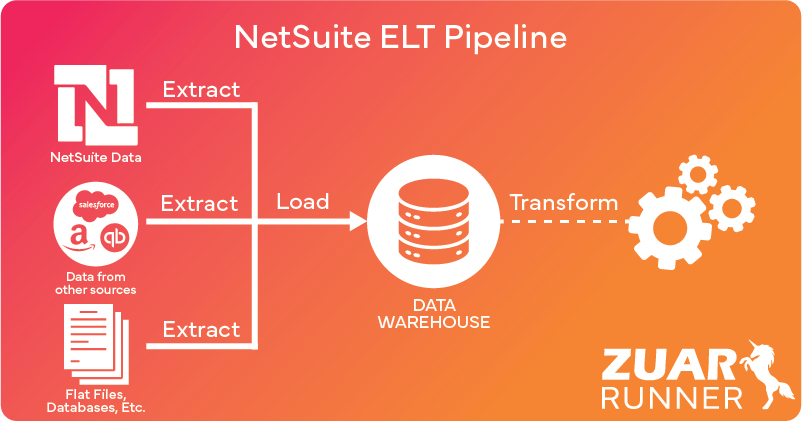
Lastly, Zuar Portal can consolidate all your analytics (from NetSuite and beyond) to create a one-stop analytics headquarters for all your stakeholders. With easy customization through drag-and-drop functionality, you can ensure secure analytics access for everyone.
Learn more about our solutions and services by setting up some time with one of our friendly data experts!




